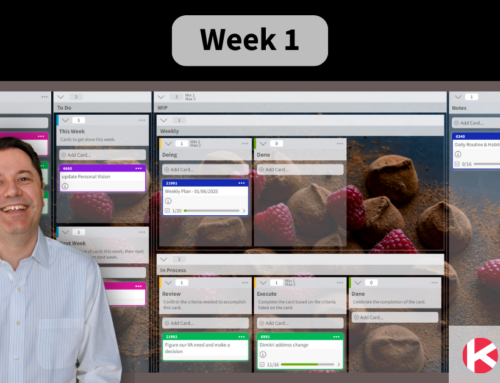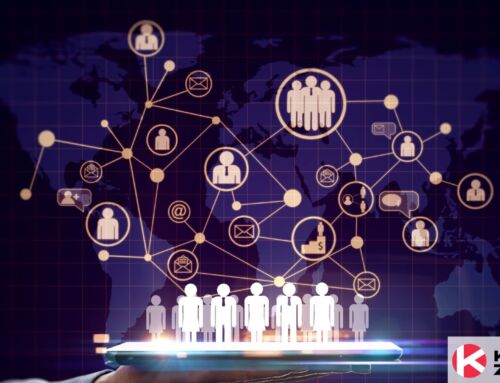
A Kanban System (kanban) is a method for managing and improving a people-based (or process-based) system. Kanban takes a holistic view of the system; it views the system as the sum of its parts or subsystems. The initial step for defining a Kanban system is to visualize the current state (As-Is) of the value stream or workflow. The visualization enables you to have a clearly articulated and shared view of the current working state of the system.
Many times, a system is not fully known (there are non-documented steps or processes) by all the people in the system and there are normally steps or processes that are done that are not known to all, that is why the visualization exercise is so valuable to uncover the full system. The intent is to map out the real processes in the system regardless of the processes being documented or not.
A Kanban System is a visualization of Value Stream or Workflow to understand the totality of the system. We need to understand the interactions (relationships) between the people, processes, and connectivity. A Kanban system is focused on the flow of work through the system, the processes (both productive and not), the interactions, delays with a focus on eliminating waste, Work in Progress (WIP) management, lead time, and cycle time. These topics are the focus of this blog, with other topics to be discussed in future blogs.

Eliminating Waste
A core principle in Lean/Kanban is to minimize or eliminate waste. Waste comes in many forms:
- Overproduction – (sometimes called a WIP bubble) building more than can be sold in the end; building more than can be used or consumed within the system, think developing more than can be tested in a given time-frame;
- Underproduction – (sometime called WIP starvation) think testers sitting idle waiting for stuff to test;
- Defects – are costly due initial time wasted building faulty product and then again with time spent having to fix faulty product;
- Hand-offs – (some systems shown as transportation costs) built in inefficiency due to organization silos, teams/team members located elsewhere, QA not part of Dev team, and alike. These hand-offs can be viewed as a cost of delays, since the team/person handing off the work is typically in a push fashion, not a pull. Thus, the team/person receiving the work is probably working on something already, so the new work waits.
Each form of waste adds to the cost of the end-product and typically adds to the lead or delivery time for the customer. One of the first steps in implementing a Kanban system is to focus on eliminating or minimizing waste.
WIP Management
Vital to keeping the system functioning efficiently and effectively. When the system has too much WIP (WIP Bubble) at any given time, the system tends to be overburdened and must determine how to store the excess materials. The additional costs of deciding how and where to store the excess is a waste of time and effort. Too little WIP (WIP starvation) causes delays in parts of the system, such as one team waiting on another team to provide them with input or software to test. This adds to the total cost of the product by having people not being productive, not the same as busy. This also adds to the lead time and impacts cycle times, which diminishes customer satisfaction.
Lead Time
Pretty simple — when does the order or request for the widget enter the system? when is the widget delivered to the customer? Lots of equations for this, but simple is a good start.
Cycle Time
Again, simple. How long does it take for each step-in system to complete? Add up all the cycle times (productive and unproductive) and that basically is your lead time.
In Kanban, we don’t ever want to optimize a sub-system at the cost of the whole system. The focus is on how to improve the system with improvements within the system.
System Coaching
System Coaching takes a holistic view of the system; people and corresponding relationships to fully understand the client’s needs. System Coaching considers the system as a collection of sub-system or a system of systems. We view the people and the system as whole, healthy with a natural desire to learn, grow, and improve.
Most relationships at work are formed by the processes and interactions between the people and how they work. How is the system (relationships) responding to change, stress, and stagnation (status quo)? With a holistic view of the system, there is a need to listen and understand the need for the people in the system to be heard and valued.
System Coaching does not focus on repairing or fixing the system but rather in helping the system reveal itself. An understanding or visualization of the system if you will, similar to Kanban. With all systems there, many voices and the voices need to be heard, we listen to the voices of the people involved but we also listen for the voice of the system or relationships, what is trying to happen, or what is happening with the relationships.
System Coaching and Kanban Alignment
How do System Coaching and Kanban align? Both models view the world as a system with subsystems that has a need for continual improvement. Each of the processes (system coaching and Kanban) desire to reveal the system to itself, that is, visualize the system in some form or fashion.
First, visualize the workflow (how does the system currently function). Now, look for ways to improve the current system with the working assumption that the current system is what it is, not good, not bad, nor even broken. Just a working system that can be improved upon.
Both coaching and Kanban work with the innate or natural need to evolve or improve to enable the system to continue and grow with the ability to adapt to the current and future environments. Stagnation is never a goal for sustained growth.
Benefit of Kanban System Coaching
Why Should You Get Coaching?
- It empowers one’s self to take a holistic or system view of the system
- It facilitates focus on desired goals
- It builds a sustainable continuous improvement process
A coach will initially assist in visualizing the system as it is, helping to focus on the “as is” and not get lost in what we think it is. That is, many times clients will depend on process documentation, how we think things work, and tend to miss how the people and processes really work. Let’s document, draw, visualize the process in action. This visualization effort will take time, think in hours, as we collect the process with the interactions and rework (asking for clarifications and alike) and make the work visible. The coach will keep the focus on the “As Is” and help you draw the steps, processes, and interactions to more accurately define the system in its whole.
Many times, the stated goals (think vision and roadmap) get lost in the noise within the system, how do we keep the goals real on a daily basis.
Building a sustainable CIP
To build a sustainable CIP, you should start by experimenting on small incremental changes then reinforce the changes that improve the system and discard the rest. From there, accept the new normal, then move on and repeat.
Learn to Work Smarter, Not Harder!
Get our top articles weekly.
Table Of Contents
Discover many more posts…







